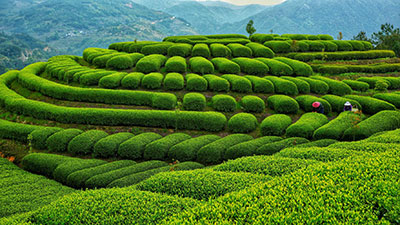
- HOME
- Tea And Culture
- Tea And Culture
Early archeological and historical evidence of Chinese tea

Legendary stories aside, archeological evidence has been found indicating that tea was used as a medicine by the elite as early as the Han dynasty (206 BCE–220 CE). It didn’t achieve widespread popularity as an everyday beverage until the Tang dynasty (618-907 CE), however. Chinese Buddhist monks were some of the first to develop the habit of drinking tea. Its caffeine content helped them concentrate during long hours of prayer and meditation.
Much of the information we have about early Chinese tea culture comes from The Classic of Tea (茶经 Chájīng), written around 760 CE by Lu Yu (陆羽 Lù Yǔ), an orphan who grew up cultivating and drinking tea in a Buddhist monastery. The Classic of Tea describes early Tang dynasty tea culture and explains how to grow and prepare tea.
In Lu Yu’s day, tea leaves were compressed into tea bricks, which were sometimes used as currency. When it was time to drink the tea, it was ground into a powder and mixed with water using a whisk to create a frothy beverage. Although this type of powdered tea is no longer common in China, it was brought from China to Japan during the Tang dynasty and lives on today in Japanese matcha.

Contact Us
Add: 414, Institute of Quality Standard and Testing Technology for Agro-products of Chinese Academy of Agricultural Sciences, No. 12, Zhongguancun South Street, Haidian District, Beijing, China
Email:typ@withworld.cn
Tel:+86 10 53647310